1lumen selects and reviews products personally. We may earn affiliate commissions through our links, which help support our testing.
Baivic V4+ Titanium review
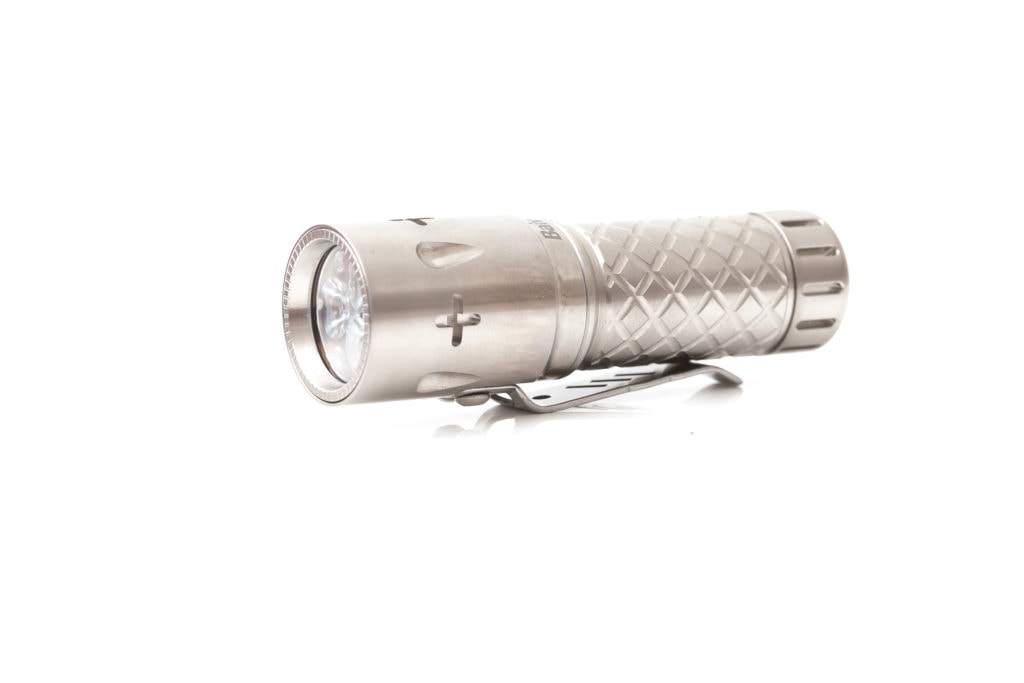
Baivic V4+ specifications
| Brand/model | Baivic V4+ |
|---|---|
| Category | Titanium flashlights |
| LED | 3* Nichia 219C |
| Lumens | 2,200 lm |
| Beam intensity | 4410 cd |
| Battery config. | 1*18350 |
| Material | Titanium |
| Modes | 3 + multiple mode groups |
| Blinkies | Standard no, but some mode groups have |
| Reflector | TIR optics |
| Waterproof | IP68 |
| Review date | March 2021 |
Introduction:
The first time I heard about Baivic was in January 2021. It was a post from one of the owner’s friends, who shared the first pictures. The manufacturer/builder or seller’s website is called geardamascus.com (make sure you use www. in front of the domain). But I enjoy seeing small custom builders coming out with affordable designs. The Bavic V4+ is a titanium flashlight with 12 trit slots in the tailcap and 8 in the head. Instead of tritium vials, you can also get Turbo glow vials that will only glow when you charge them up with light or UV.
The one I am reviewing is the original shiny titanium version. There is also a sandblasted version for the same price.
Package quality.
Unlike most other flashlights, the Baivic arrived in a soft case with a nice amount of protection surrounding the light. Since Baivic is custom-built, I didn’t expect a specially made shipping box, and neither should you. Even the higher-end custom lights are usually not sent in custom-made boxes.
The soft case has a zipper and looks like a camera case or something. Inside the case, you can find the following:
- The flashlight: Baivic V4+ Titanium
- O-ring
- Manual
Custom made flashlights usually have no special accessories or packaging. And this type of packaging isn’t bad, but the first time I see it being used.
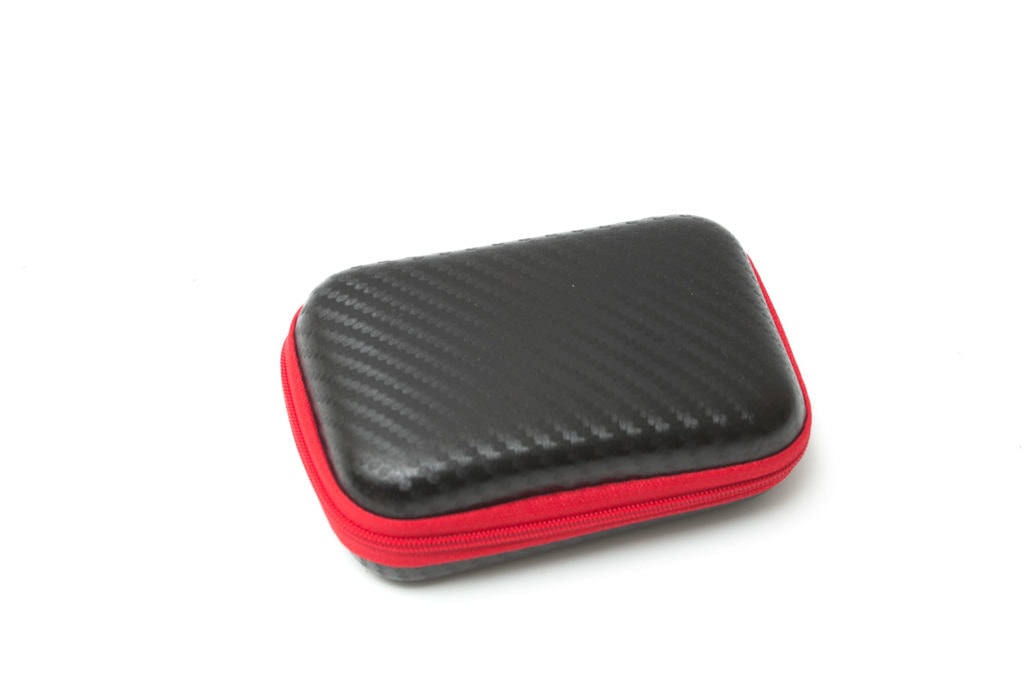
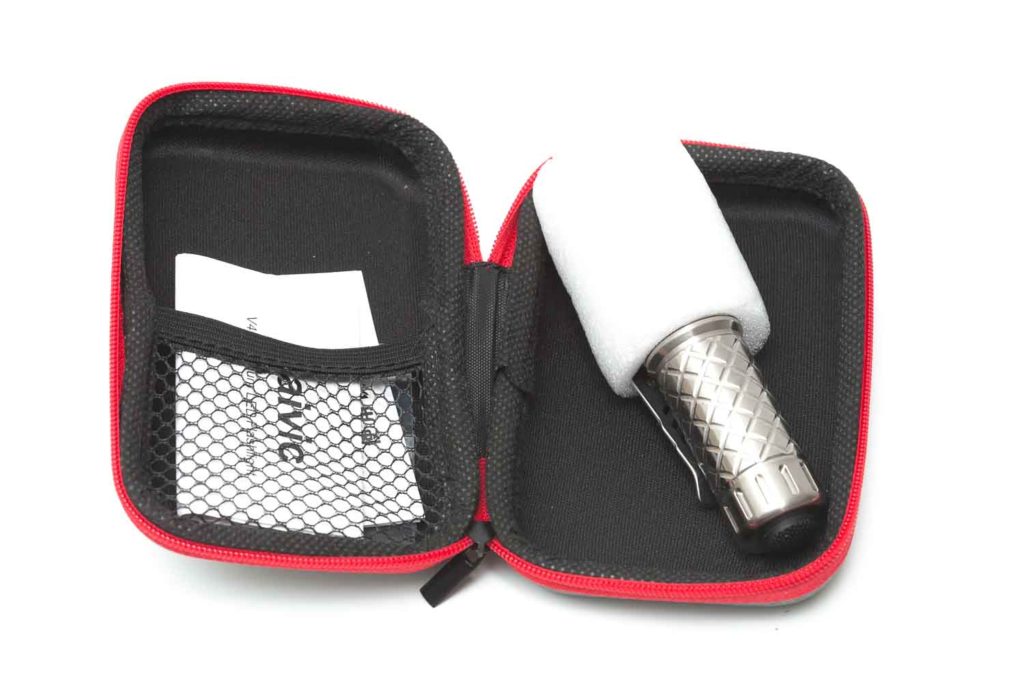
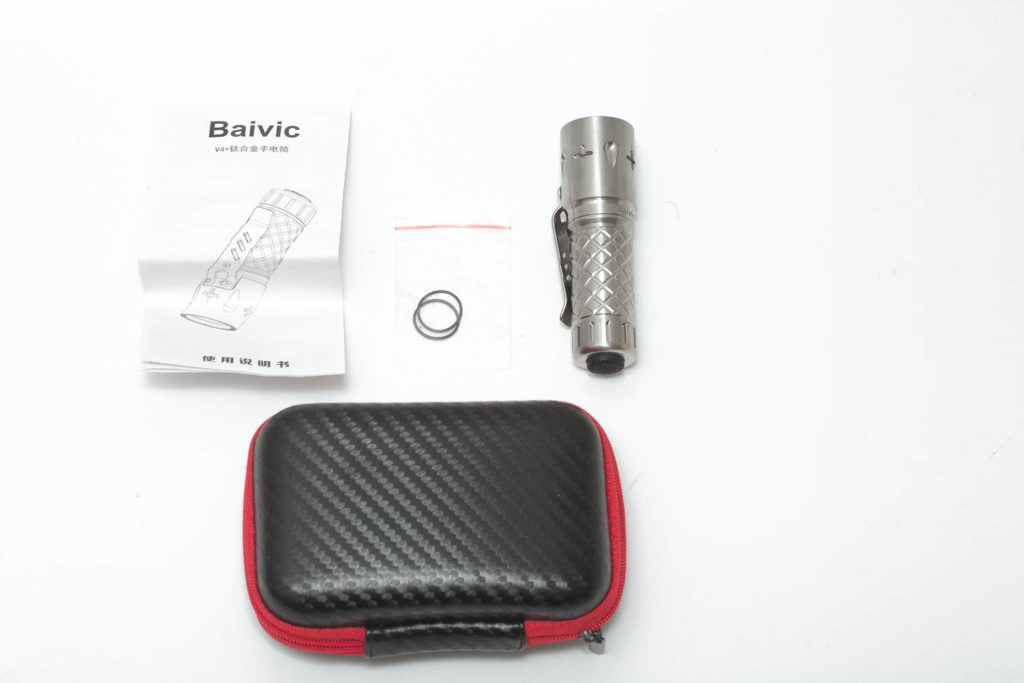
Flashlight in use
The Baivic V4+ has a few unusual characteristics. The first thing that somebody pointed out was the use of a rubber boot. Most titanium flashlights are more likely to use a titanium boot, which sometimes includes trit slots.
The switch is located in the rear and is a forward clicky switch. This means that you change modes before you activate the switch completely by tapping on the switch to your desired output level. By default it comes with 3 basic modes, Medium 1, High and Turbo.
I do enjoy this size of flashlights for every day carry. It looks pretty slick and it fits right into your pants.
The other thing that most people noticed was the placement of the clip. Instead of the clip using the head-down direction, it’s actually pointing upward. I don’t usually slip my flashlight onto onto my pockets or jeans, so I don’t really care about this. Its aesthetics look quite nice because of the clip placement in my opinion. It’s highly possible that is just because I’m not used to it.
Titanium flashlights usually feel a bit ‘wet’ or you may even call it ‘sticky’. And that does help in terms of grip. And having that clip there does help as well. The clip also feels very solid and strong.
Because of the protruding tail switch, you can’t make it tail stand.
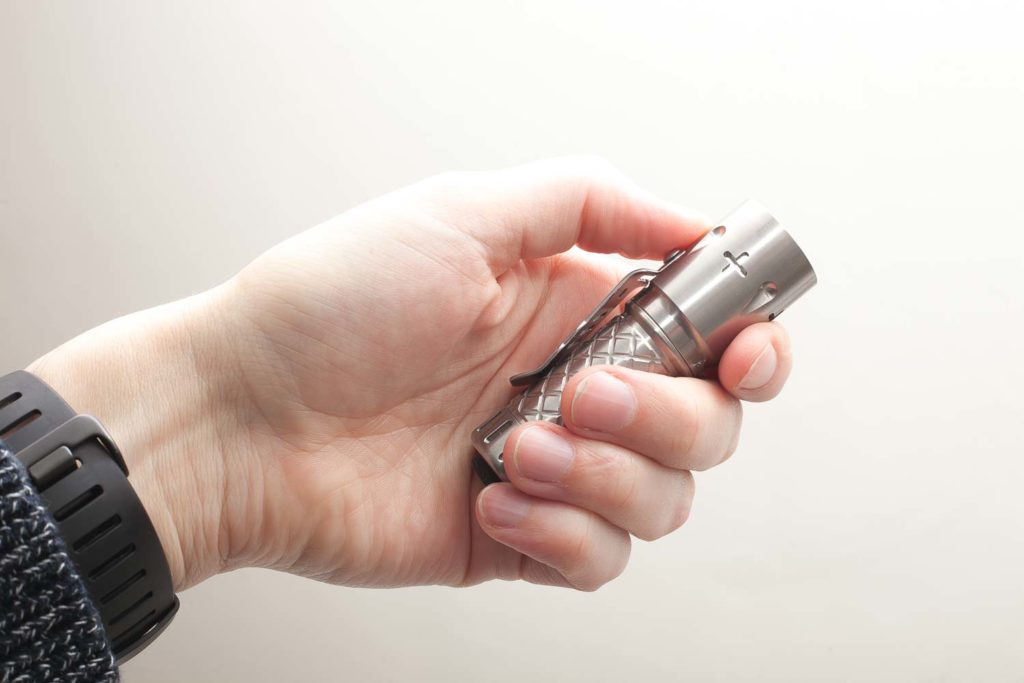
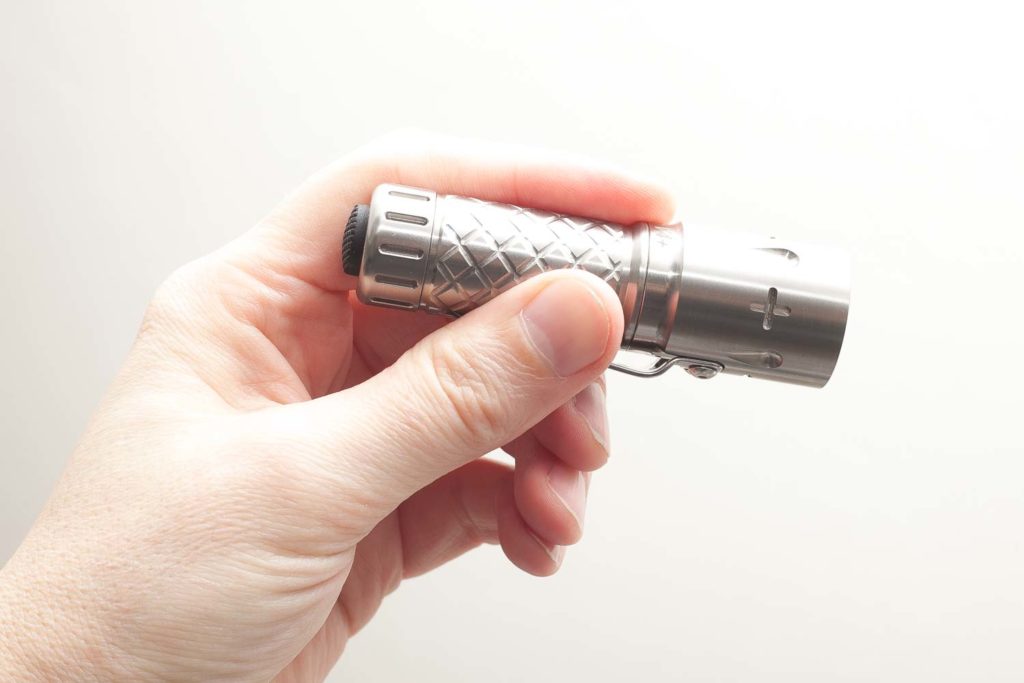
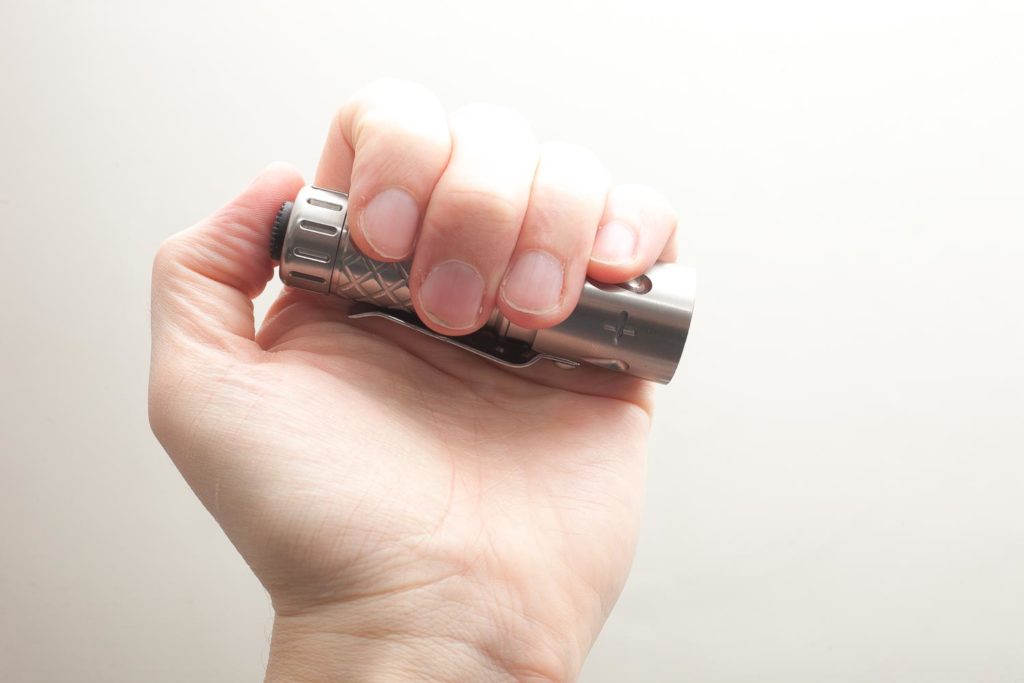
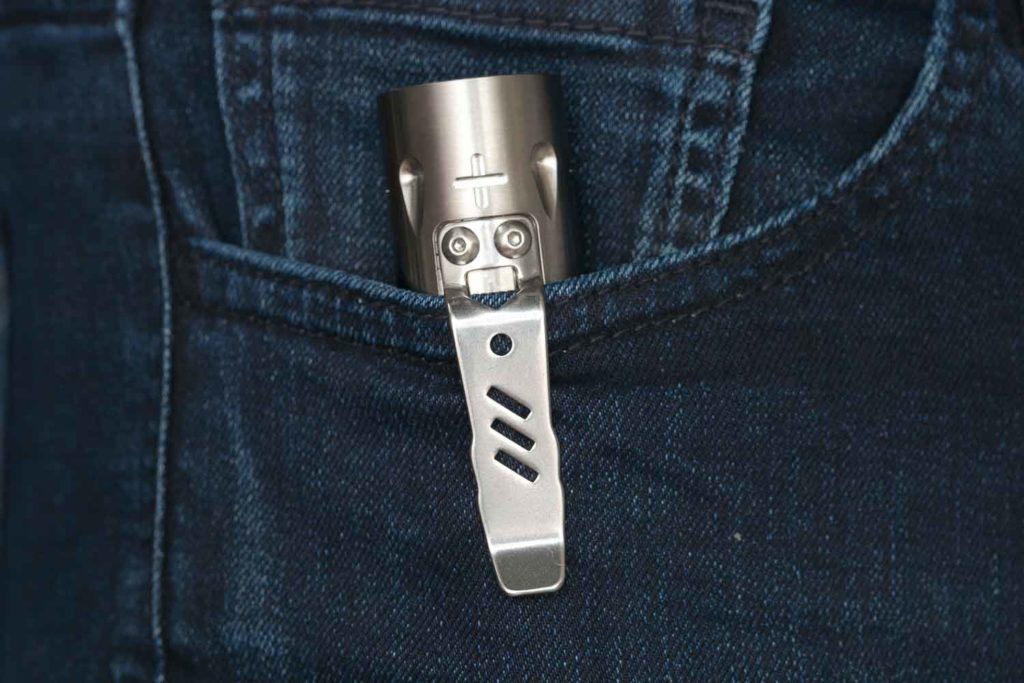
Build Quality, and Warranty
I’m not sure if you own any titanium flashlights, but tightening the titanium flashlight parts with threading usually means squeaking or grinding sounds. The Baivic V4+ doesn’t sound too squeaky because of the short threads and rubber o-ring in place. I’m not sure how long this will last, and it might be only temporary, but so far so good.
Titanium flashlights do have another disadvantage. Titanium transfers heat much slower than copper or even aluminum. This means that these type of flashlight tends to be less bright than their aluminum or copper equivalents. This is not always visible at start, but definitely after a few minutes of use in Turbo mode with a few thousand lumens. That’s why most Titanium lights aren’t advertised as one of the brightest flashlights.
The head, tail, and all other parts can be taken apart without too much effort. There is no thread locker or glue anywhere.
Warranty: this is what the manual notes:
“5 years free warranty if malfunction by manufacturing factors in normal use. After the 5-years warranty period, paid maintenance is provided”
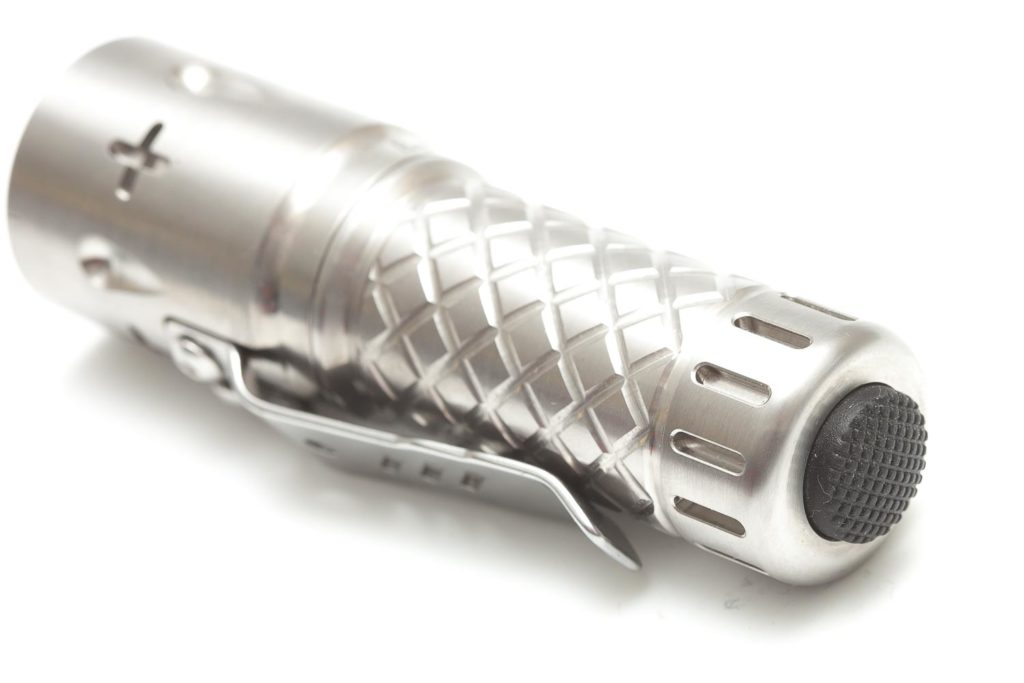
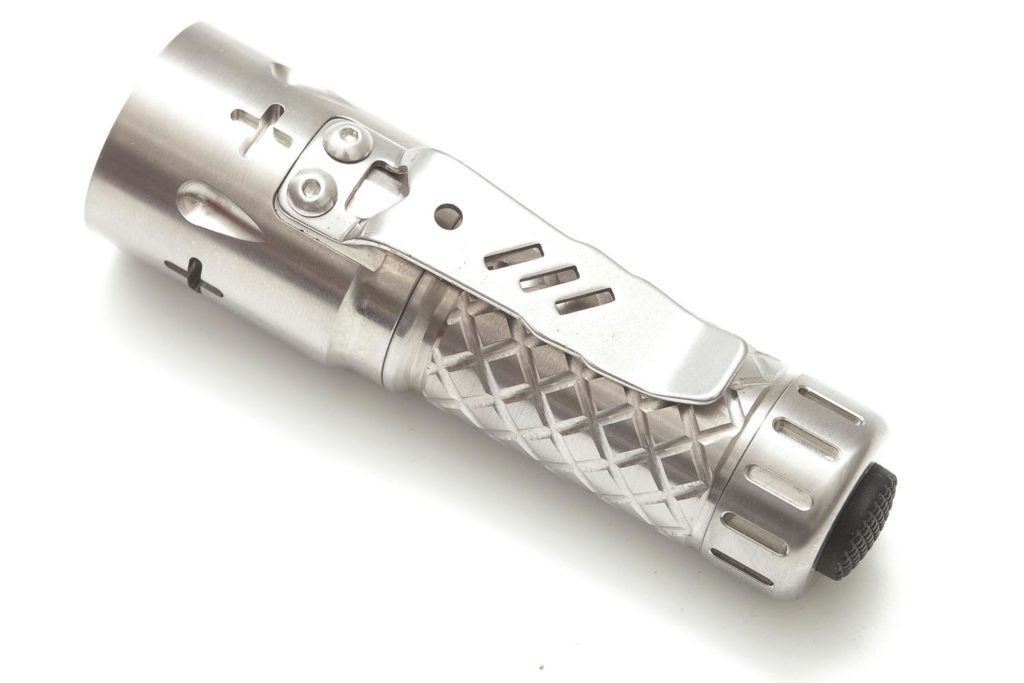
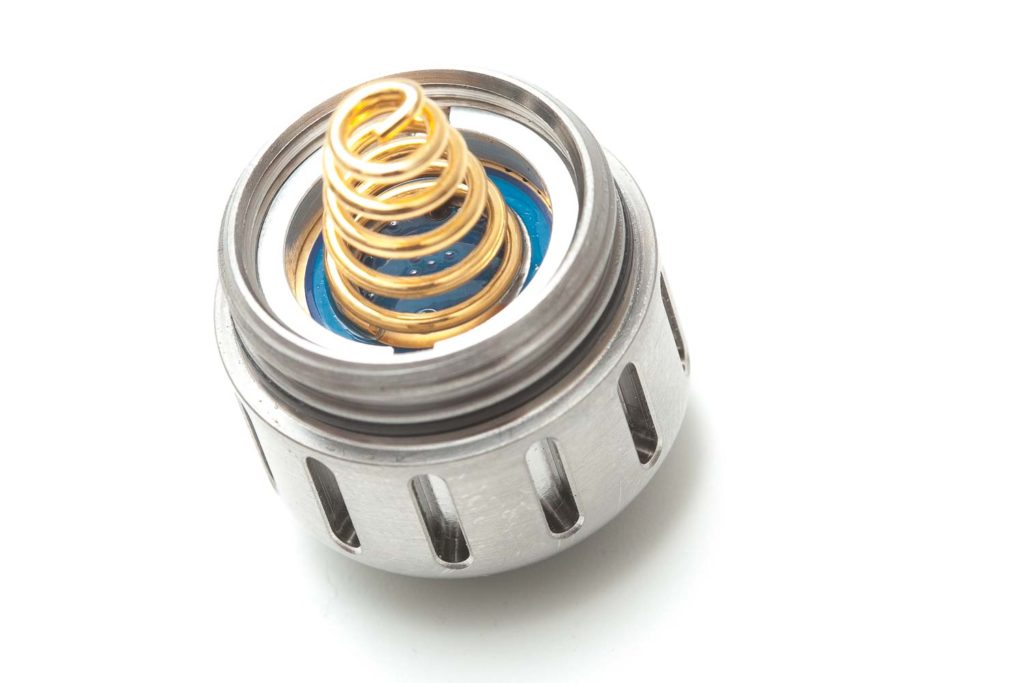
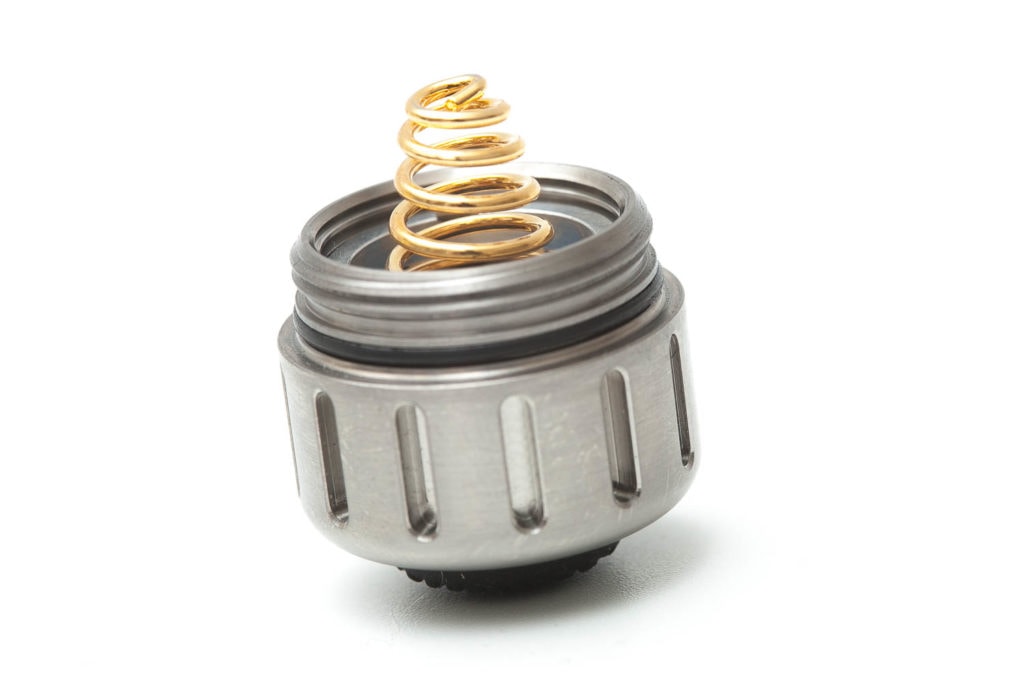
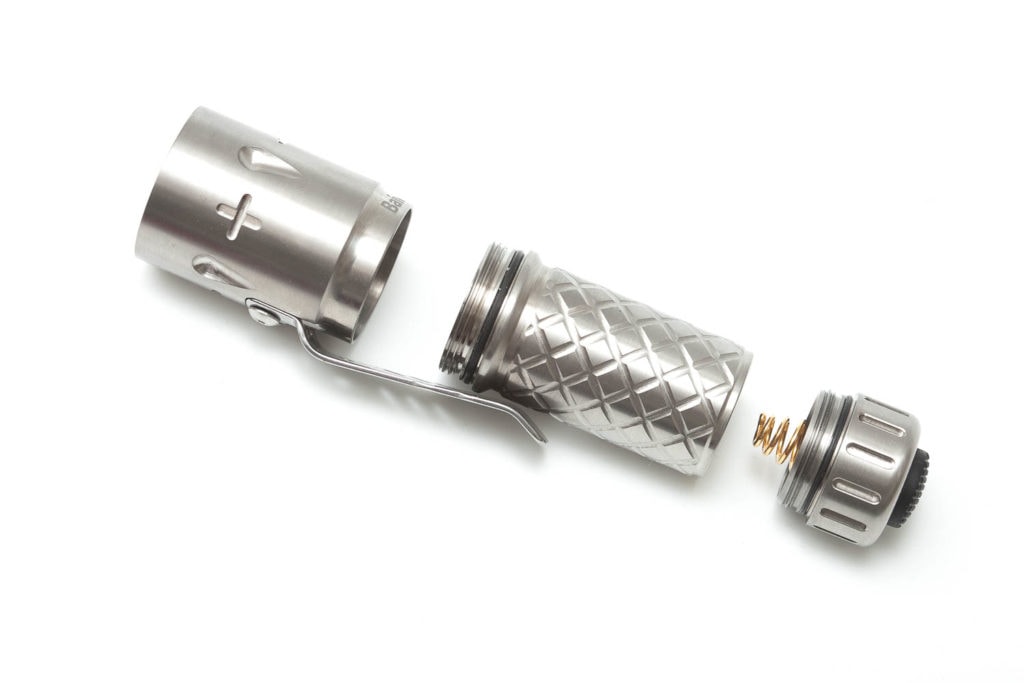
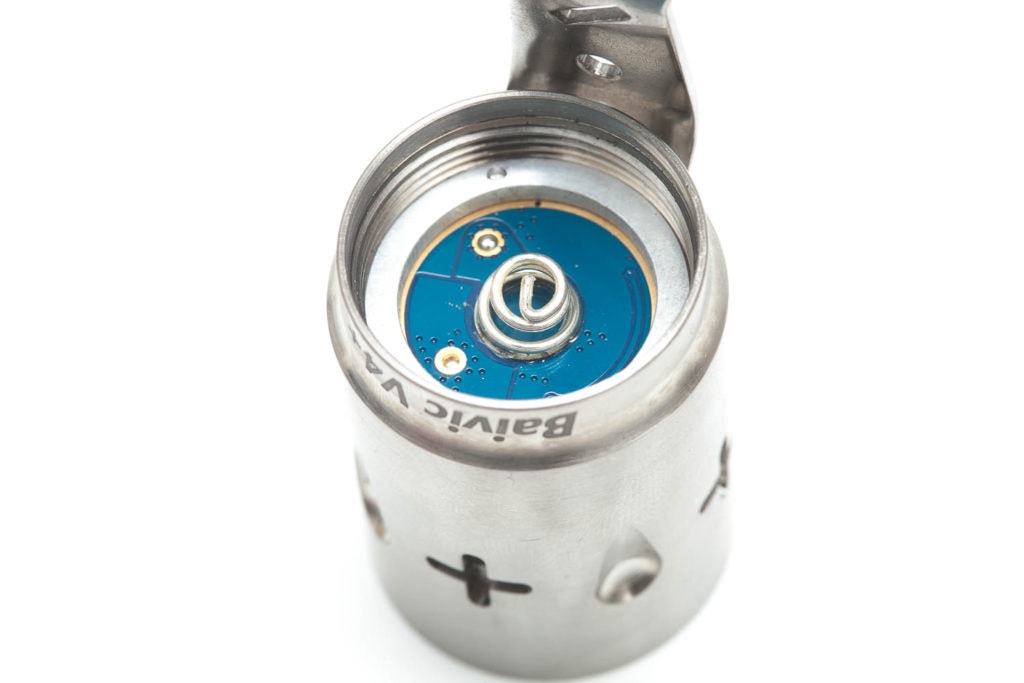
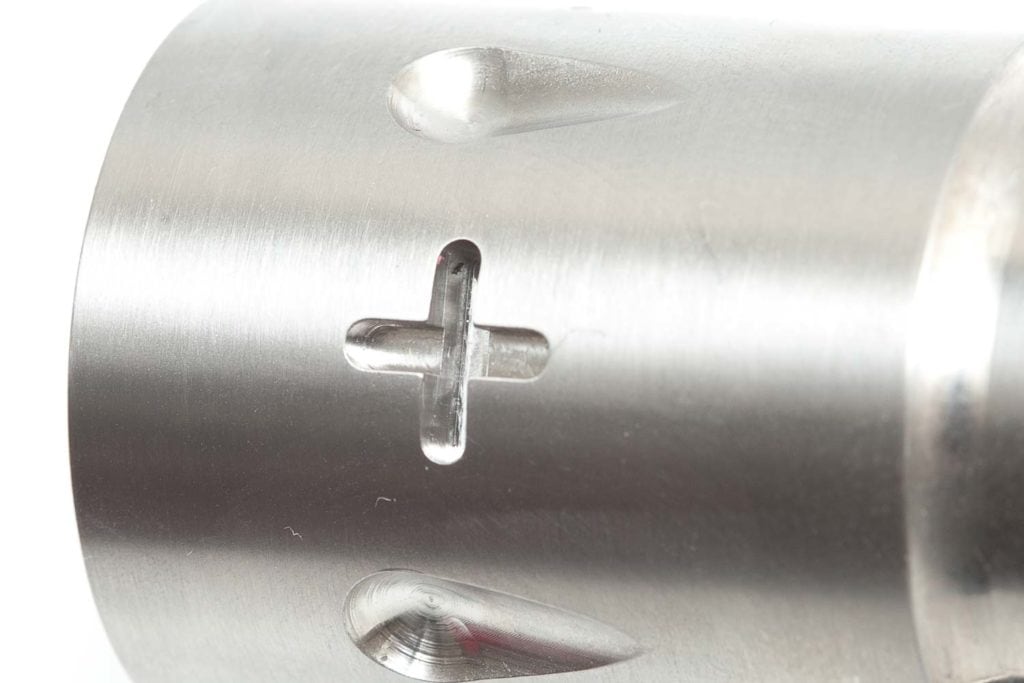
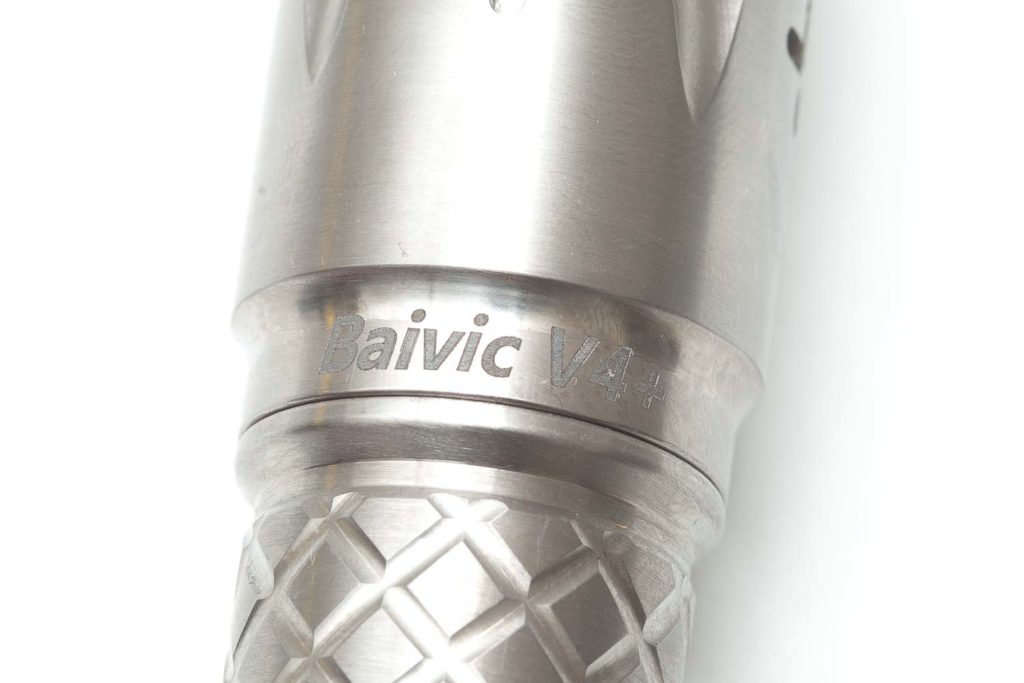
LED, Lens, Bezel, and Reflector
At the moment of writing, there is no choice of emitters. It is currently shipped with 3*Nichia 219C 90CRI and there is no mention of the exact beam color temperature. However, it does say Neutral white.
The Baivic V4+ is using a triple TIR lens, that looks like the regular Carclo TIR optics, but the specifications don’t mention a specific name or model number. It just says Anti-reflective glass, PC TIR Optical Lens. And because of the TIR optics, the beam is very nice and smooth. No harsh shadows or rings, just a smooth transition from hotspot to spill.
The bezel is removable but is placed inside the head, not on top like normal bezels are. So it’s probably better to call it a retaining ring instead.
In terms of color temperature, I don’t really put them in the “Neutral White” category, personally. Scroll down to the beamshots, where you can see the color temperature.
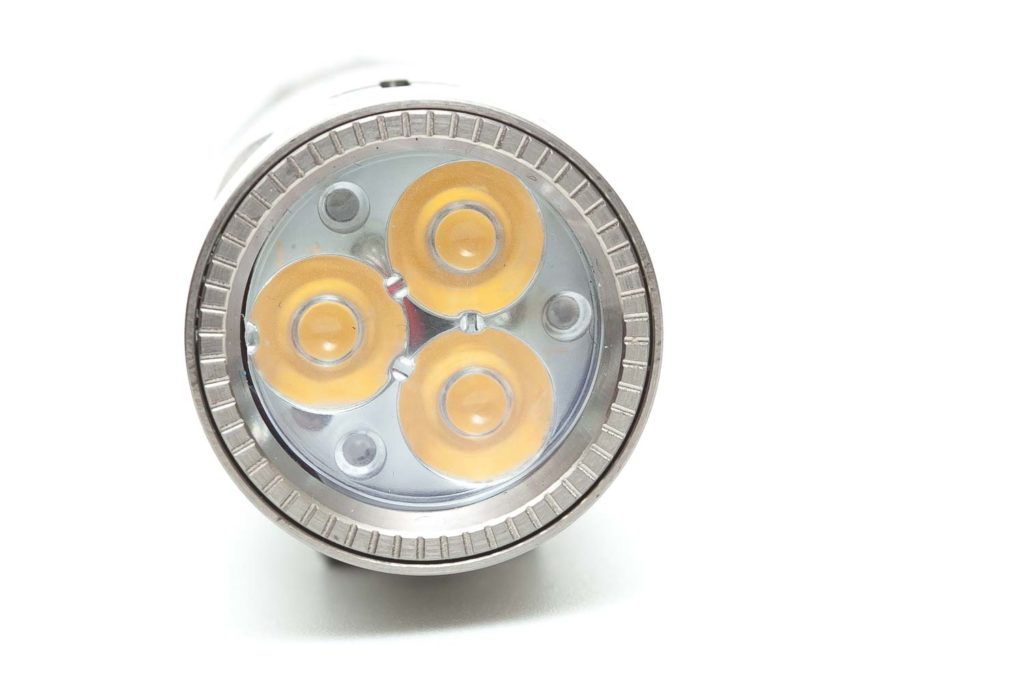
Dimensions and size comparison
- Length: 91.8 mm / 3.612 ”
- Head diameter: 26.55 mm / 1.045 ”
- tailcap diameter: 22.57 mm / 0.888 ”
Weight:
- Empty: 88.5 g / 3.12 oz
- With Efest 700mAh battery: 109.2 g / 3.86oz
Titanium EDC Flashlight comparison
Size compared to other titanium flashlights
Image 1, from left to right: Jetbeam E1, Jetbeam DM25, Baivic V4+, Reylight Krystal, Reylight Dawn (old version), Sunwayman V10R ti+.
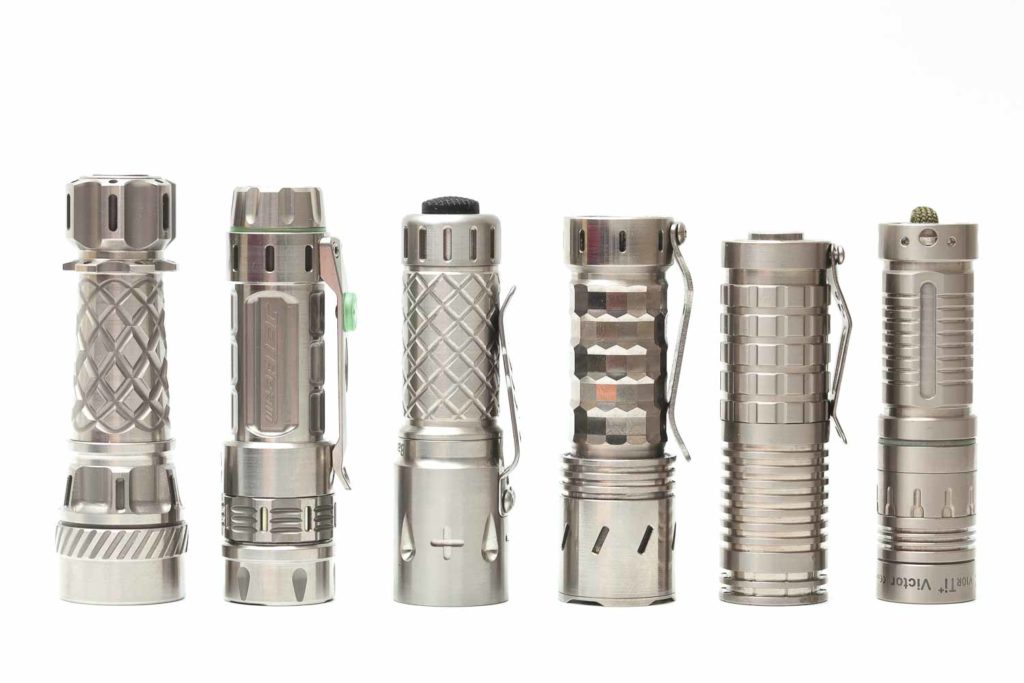
Driver & User Interface:
The Baivic V4+ has a rather unique user interface. But not in a very positive sense of the meaning.
It has 4 different groups, and they aren’t exactly like your average mode groups. The only mode group I personally like is group 2.
- Group 1: Medium 1 – High – Turbo
- Group 2: Eco – Low – Medium 2
- Group 3: High – Turbo – Strobe
- Group 4: SOS – Breathing – Beacon
What I do like is the 5th option you have, namely: activate/deactivate Mode memory.
To enter one of the desired modes, simple tap the switch 10 times (or more, because it will just stop) and keep the switch pressing, or simply click the switch so the flashlight is turned on. The flashlight will blink 5 times in a row. Each blink is a mode group. The 5th blink is the toggle for mode memory activation/deactivation.
I shared my thought on this UI, and suggested a different menu, so we’ll wait and see.
Available modes:
- Eco, Low, Medium 1, Medium 2, High, Turbo
From OFF:
- Half-press: temporarily on
- Tapping: change modes
- Single-click: turn the flashlight on (to last used mode when mode-memory is activated)
From ON:
- Single-click: turn off
Shortcuts:
- There are no shortcuts
Mode memory:
- This can be activated/deactivated in the menu
Blinky modes menu:
- Yes, in mode group 3 and 4
Low battery warning:
- no
Lock-out mode:
- Not necessary
PWM:
- Not visible
Batteries & Charging
Titanium EDC flashlights are often built for 18350 batteries. The Baivic V4+ accepts button top 18350s and flat tops because there are springs on both sides (driver and tailcap).
Although advertised as being 2200 lumens, I highly doubt it, with a titanium flashilght and a single 18350 battery. 2200 lumens might t achieve with a 18350 battery, but only for a few seconds. But I wouldn’t recommend buying high-drain batteries for a titanium flashlight, because the heat can’t dissipate fast enough. This can result in a broken flashlight. I’m thinking of the Lumintop Tool Ti 2.0 Titanium (non-upgraded version). It got so hot that it desoldered the wires by itself.. that’s not a good sign.
Performance
Lumen measurements:
All output numbers are relative for my home-made Integrating Sphere. It is set up with an Extech SDL400 Lux Meter for measurements including a Kenko PRO1D ND-16 filter. The base measurement is done with a Convoy S2+ that has been tested at 255 lumens.
All of my readings were taken from a fully-charged Efest 700mAh. Keep in mind that the battery is already a few years old, although not used often. So a brand new, high drain battery is likely going to push more lumens.
Amps were measured with a Fluke 77III and standard probes at the tailcap. I used Eco Low and Med 2 because they were measured in that way (UI group 2) and then Med 1, High and Turbo (from UI group 1), so they are not in the same mode group.
| Mode | Amps | Specified | 10 min | 30 sec | start |
|---|---|---|---|---|---|
| Eco | 0.05 A | 10 | – | 11.28 | 11.90 |
| Low | 0.16 A | 90 | 79 | 83.96 | 84.58 |
| Med 2 | 0.7 A | 460 | 207 | 365 | 382 |
| Med 1 | 0.23 A | 190 | 153 | 162 | 162 |
| High | 1.57 A | 860 | 200 | 614 | 719 |
| Turbo | 4.57 A | 2200 | 190 lm | 858 lm | 1385 lm |
I have to admit that the Efest cells I’m currently using are probably not the best in their class. They are a few years old, but not used very often. But still, I think you should be able to reach higher output and longer runtimes, with newer/higher drain batteries.
Runtime:
The runtime test was done with the 50cm integrating sphere, including the Kenko Pro1D ND-16 filter and Extech SDL400 data logging Lux Meter.
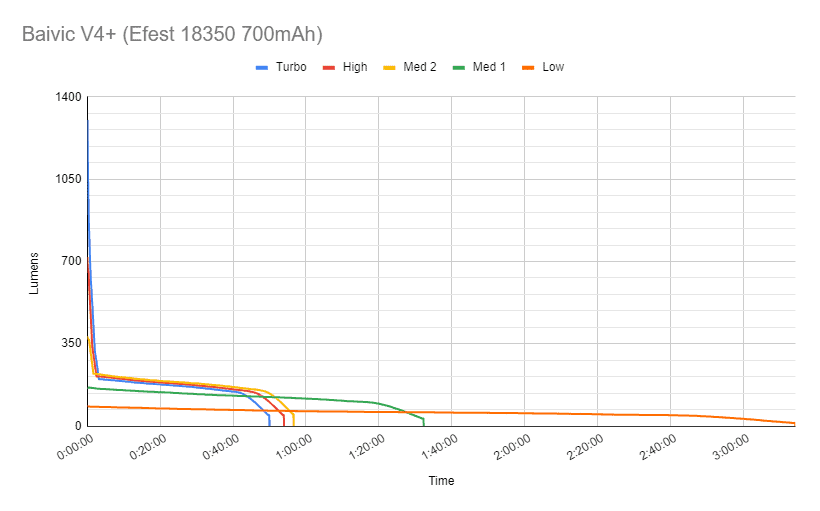
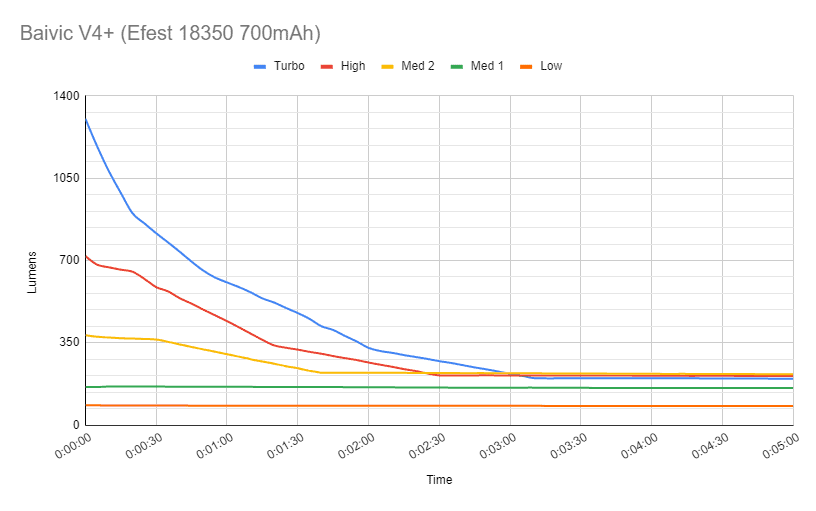
The first graph is the full runtime chart with all modes except Eco. The second chart is the same chart but only the first 5 minutes. This will give you a better understanding of its performance.
Turbo and High drop very quickly, to roughly 220 lumens in 3 minutes. Same goes for Med2, which also drops to roughly the same output but in 1 and a half minute.
All 3 modes have a runtime of less than 1 hour. Not very exciting, but that is what to expect from a titanium 18350 flashlight
Med 1 runs for 1 hour and 20 minutes relatively stable, then drops to 30 lumens in 1 hour and 32 minutes and then turns off completely
Low slowly reduces output, till it dies at 3 hours and 14 minutes. That’s also a little strange, because I only measured 0.16A at startup, and 700mAh would have a much longer runtime I would imagine.
Throw Measurement
Measurements were taken indoors at 5 meters with a professional Hagner E4-X Lux Meter, at 30 seconds. With the Efest 700mAh battery.
| Mode | Candela measured | Meters | Yards |
|---|---|---|---|
| Med1 | 500 | 45 | 49 |
| Med2 | 1175 | 69 | 75 |
| High | 2000 | 89 | 98 |
| Turbo | 2900 | 108 | 118 |
It is advertised as being having 4410 cd, but I was only able to measure 2900 after 30 seconds.
Beamshots
For the following beamshots I used a Canon EOS 5D Mk2 and a 50mm lens. manual settings: ISO1600, 1/4sec , F4, 5000K
The shed is about 65 meters / 71 yards away.
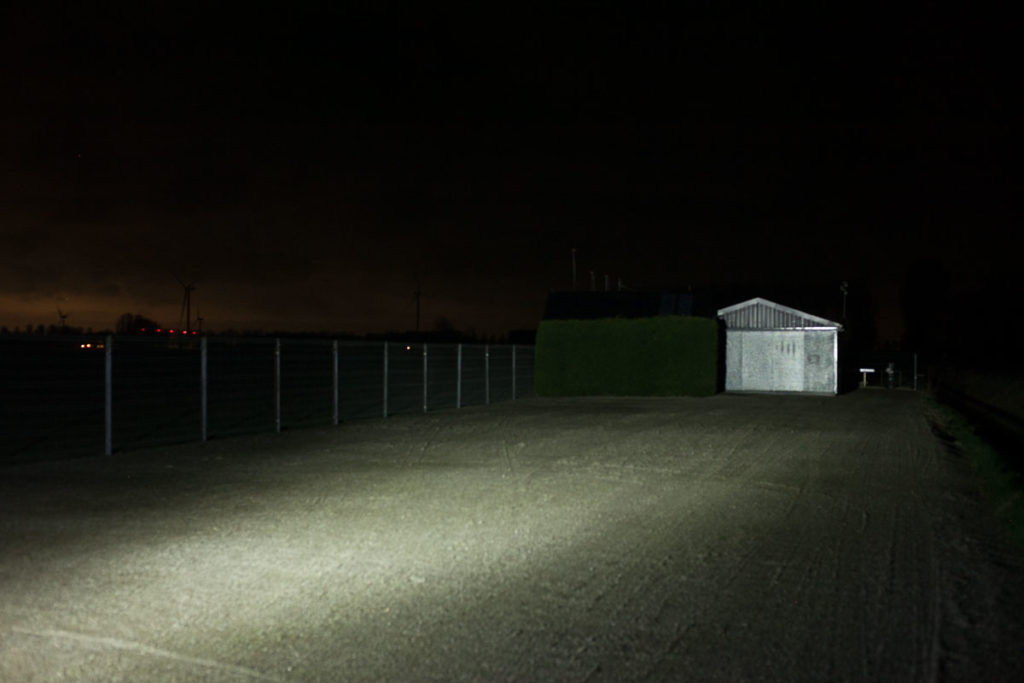
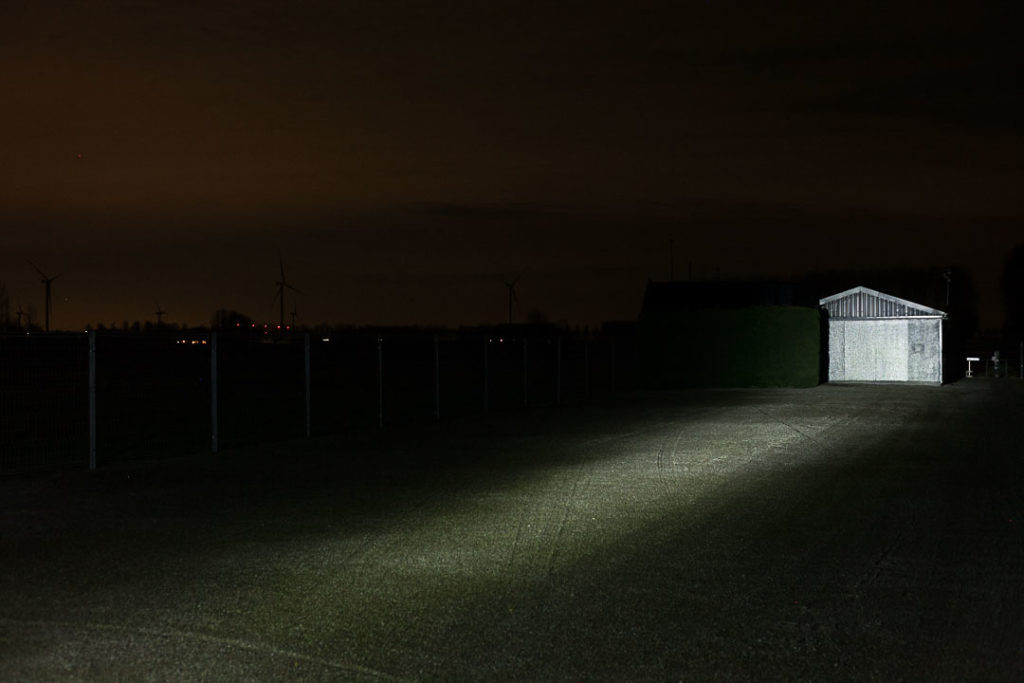
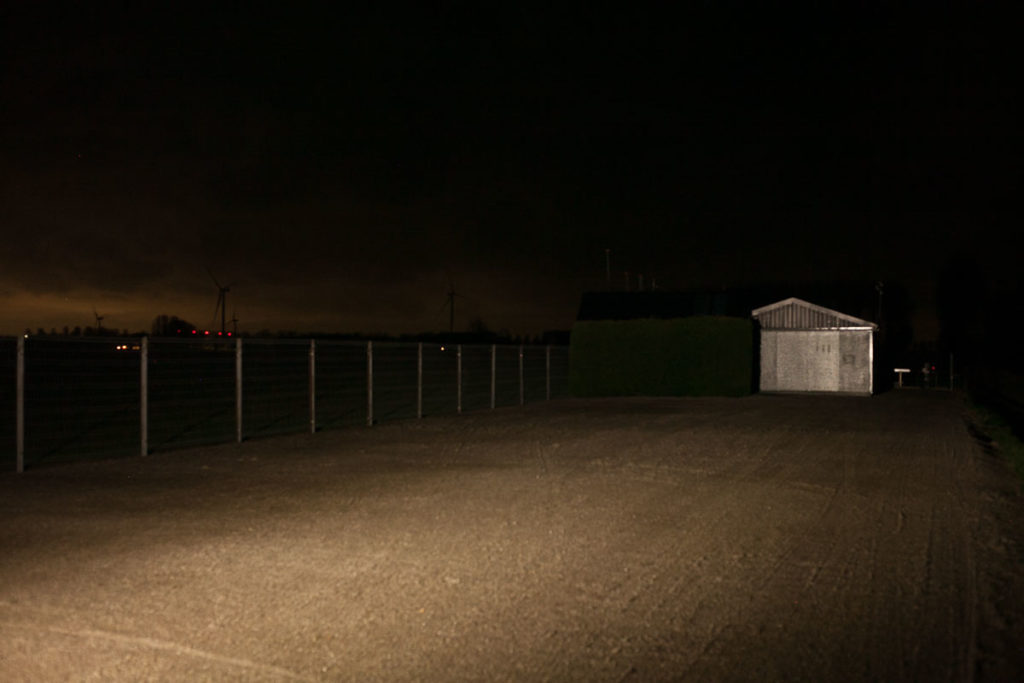
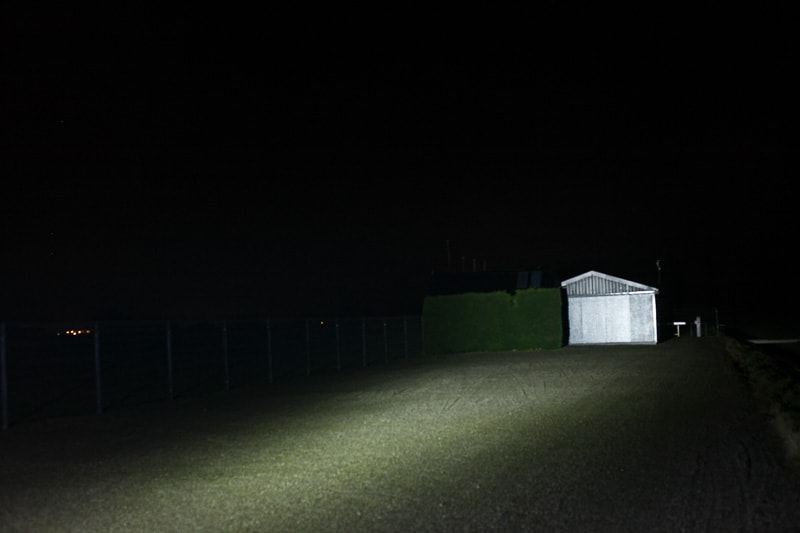
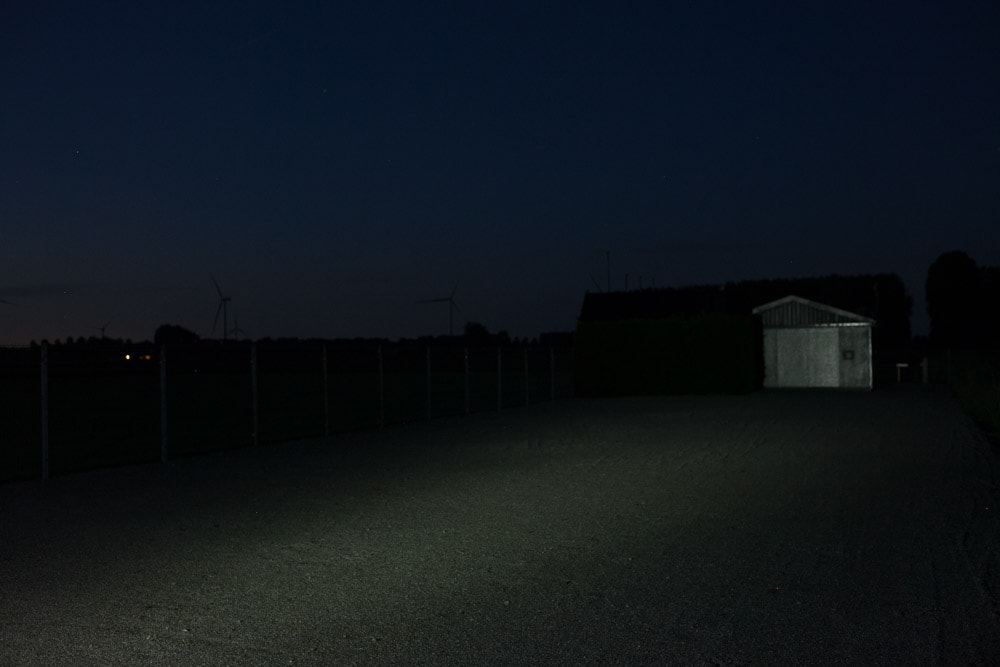
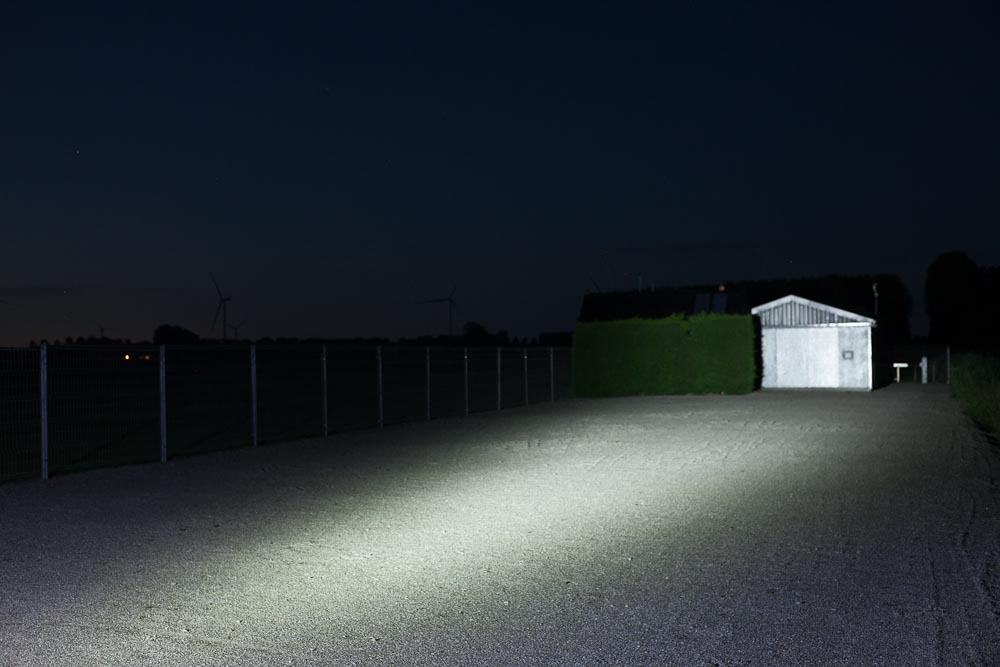
Disclaimer: This flashlight was sent to me for review at no cost by Geardamascus. I have not been paid to review, nor have I been holding back on problems or defects.
Final Verdict
Pros
- Affordable Custom Titanium flashlight
- It has a large number of Trit slots
- No squeaking sounds
- Pocketable
Cons
- Runtimes are short
- Unusual clip position
- Not reaching claimed output
- Unusual UI groups
- Rubber switch cover instead of Titanium

3.5 stars: ★★★⋆
Without the cons, I think it has good value for the money. But the UI is just not it. I recommended them to change the UI slightly, and use something more ‘general’. Most people wouldn’t like the current settings where you don’t have a Low with High/Turbo in the same menu.
If they fix the UI, I can recommend it as a nice affordable Custom titanium EDC flashlight, even with the other flaws. Don’t expect thousands of lumens (and not even 2200 like it was advertised at) and you’ll have a great-looking EDC.
Baivic V4+ discount code
Geardamascus is no longer selling flashlights. Instead check out one of the following buyers guides:
- Buyers guide: the best titanium flashlight
- Buyers guide: the best EDC flashlight
1lumen selects and reviews products personally. We may earn affiliate commissions through our links, which help support our testing.